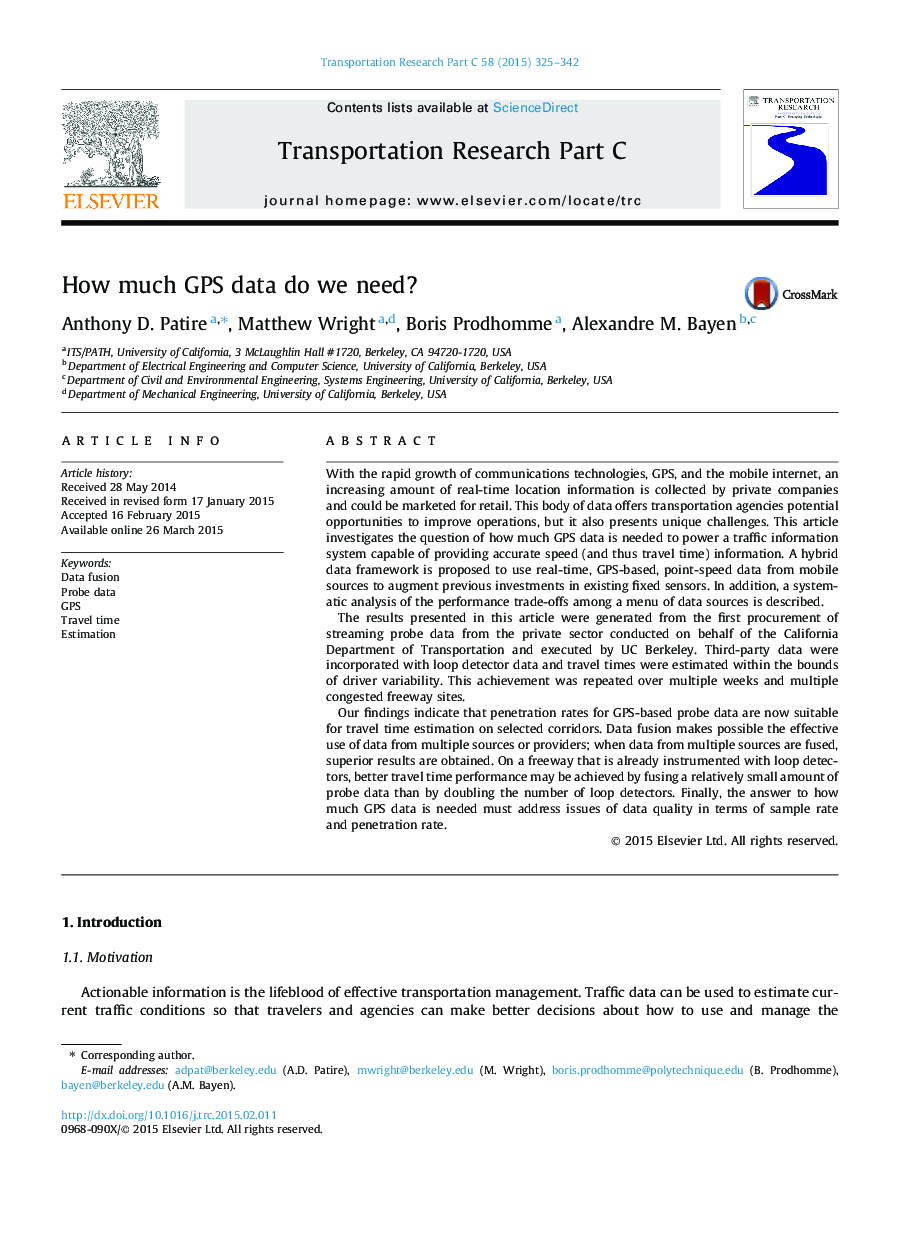| Article ID | Journal | Published Year | Pages | File Type |
|---|---|---|---|---|
| 524892 | Transportation Research Part C: Emerging Technologies | 2015 | 18 Pages |
•We present a framework for fusion of fixed sensor data with non-aggregated, GPS-based, mobile probe data.•Commercial, GPS-based, probe penetration rates on selected freeways are appropriate for data assimilation with a flow model.•On freeways, a high penetration rate of GPS-probes is to be preferred over a high sample rate.•We report the relative predictive power of loop data and GPS-probe data.•When loop and probe data are fused, travel times are estimated within the bounds of driver variability.
With the rapid growth of communications technologies, GPS, and the mobile internet, an increasing amount of real-time location information is collected by private companies and could be marketed for retail. This body of data offers transportation agencies potential opportunities to improve operations, but it also presents unique challenges. This article investigates the question of how much GPS data is needed to power a traffic information system capable of providing accurate speed (and thus travel time) information. A hybrid data framework is proposed to use real-time, GPS-based, point-speed data from mobile sources to augment previous investments in existing fixed sensors. In addition, a systematic analysis of the performance trade-offs among a menu of data sources is described.The results presented in this article were generated from the first procurement of streaming probe data from the private sector conducted on behalf of the California Department of Transportation and executed by UC Berkeley. Third-party data were incorporated with loop detector data and travel times were estimated within the bounds of driver variability. This achievement was repeated over multiple weeks and multiple congested freeway sites.Our findings indicate that penetration rates for GPS-based probe data are now suitable for travel time estimation on selected corridors. Data fusion makes possible the effective use of data from multiple sources or providers; when data from multiple sources are fused, superior results are obtained. On a freeway that is already instrumented with loop detectors, better travel time performance may be achieved by fusing a relatively small amount of probe data than by doubling the number of loop detectors. Finally, the answer to how much GPS data is needed must address issues of data quality in terms of sample rate and penetration rate.
